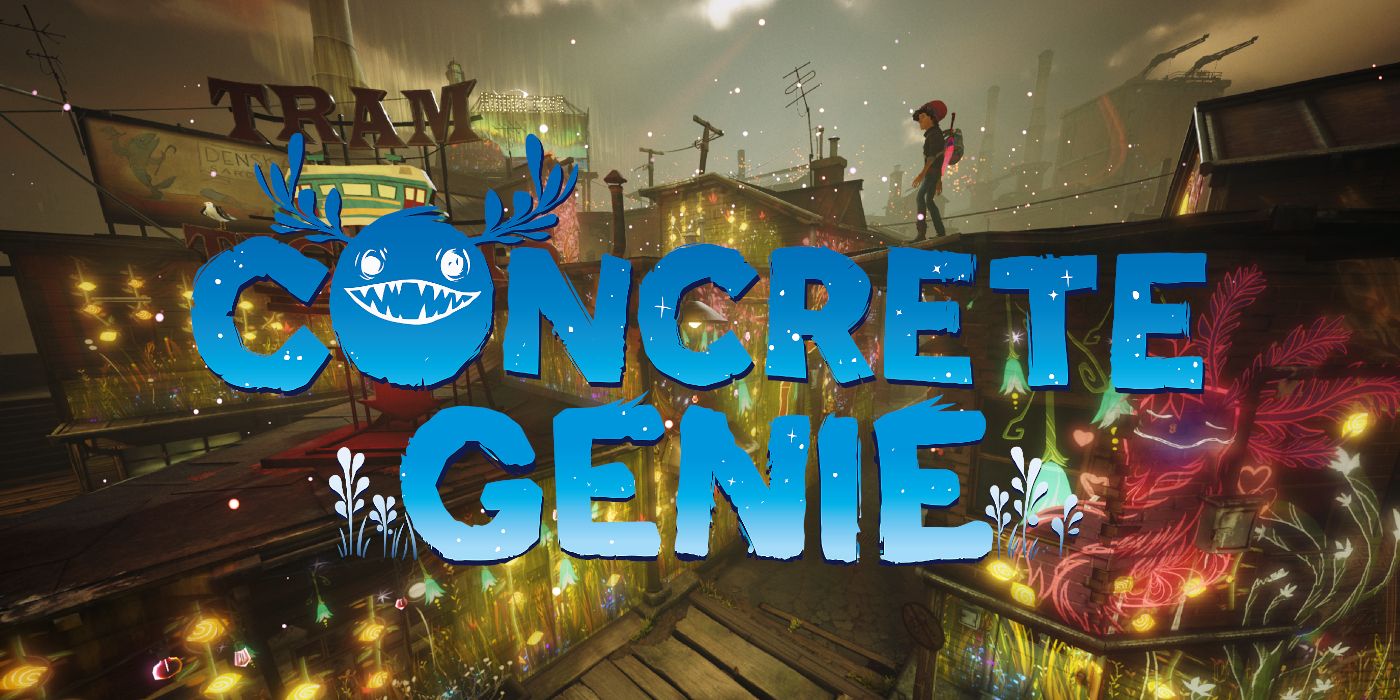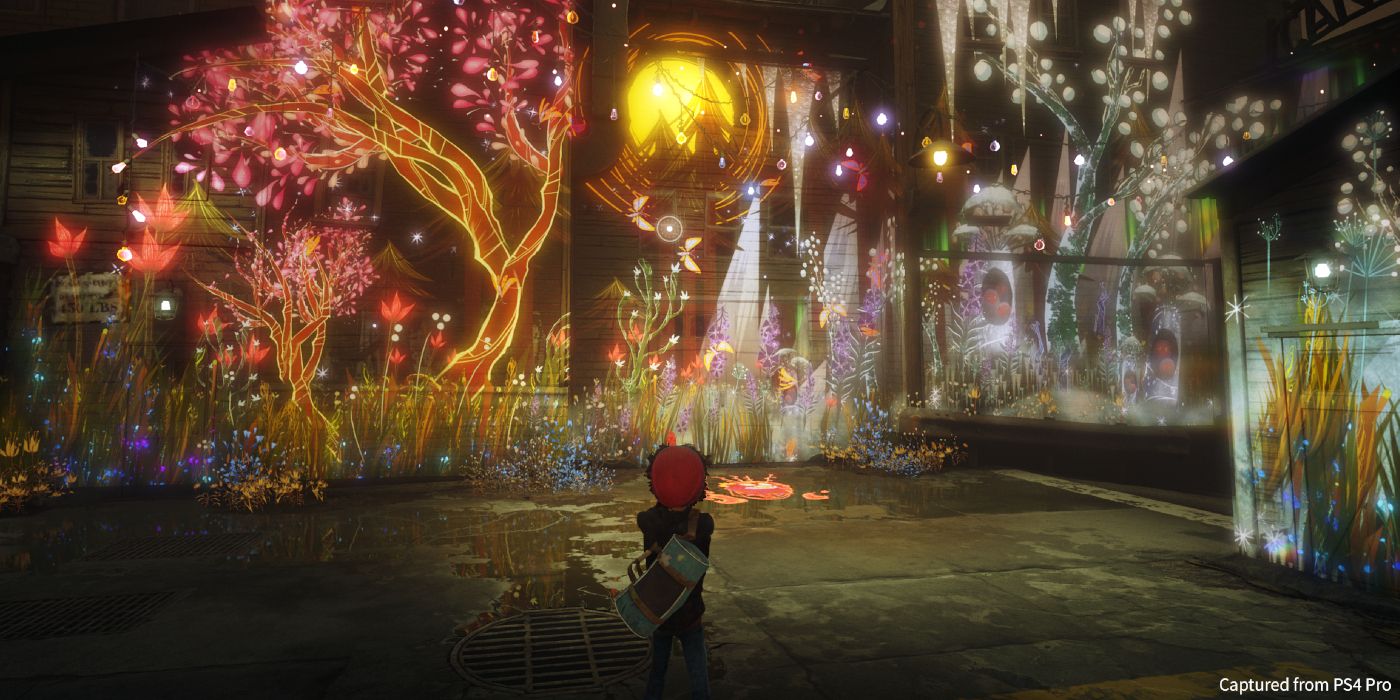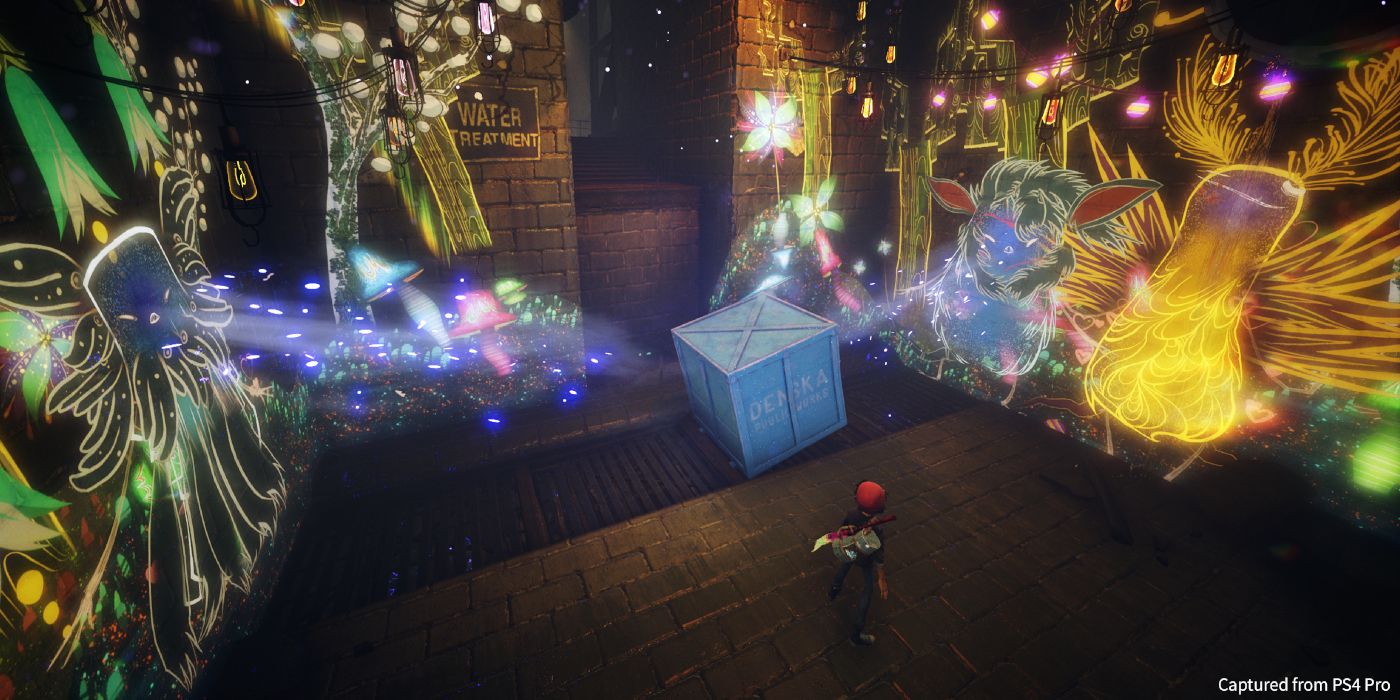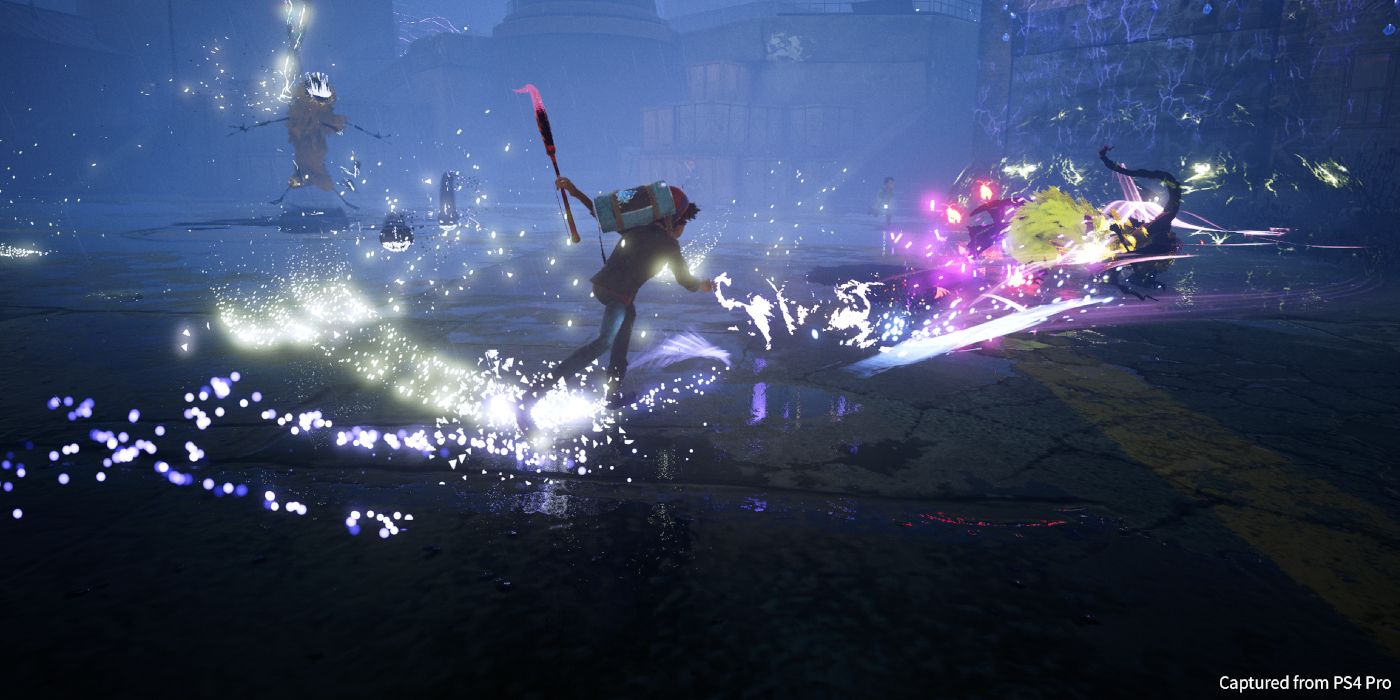Concrete Genie certainly has a vandal's heart, but this creatively-oriented PlayStation 4 exclusive struggles to tie its various mechanics together.
Art creation as a central mechanic in video games always seems like a shoe-in. With a simple wave of an analog stick or motion controls, adding vibrant color and animation to a formerly drab world always feels direct and productive, a proven formula in a variety of games, from Okami to De Blob to the Jet Set Radio series. It’s a reaction that serves the interactive medium in a way that feels pure, but it can be tricky to coordinate given the objective elements of art itself, and it’s one of several problems that new PlayStation 4 exclusive Concrete Genie struggles to prioritize, making the resultant experience a little bit muddled on the whole.
Denska is a dimly-lit port-side town that has clearly seen better days, condemned by a lack of industry and a kind of ennui infused into its ramshackle shanties and warehouses. Main character Ash is a young artist busily sketching his imagination into a journal, which mostly consists of named monster characters with bulbous furry bodies and beaming smiles. Contending with an intimidating crew of roving bullies who frequently make his life hell, his journal is stolen, shredded, and its pages scattered to the wind, before he’s chased to a distant lighthouse where one of his created “genies” comes to life.
Now armed with a magical paintbrush, Ash returns to the Denska mainland to throw glowing living paintings onto its canvas, re-enlivening the town one wall at a time. In practice, this means that virtually any broad surface can be painted on, either by using the analog stick or through the default motion controls — for such an important mechanic, it’s notable that either method works well. Rather than painting these pieces line by line, players get a palette of different forms by retrieving each shredded sketchbook page, letting them paint impressive rainbows, streams of flowering vines, animated butterflies, and more.
And, of course, there are the genies themselves, who are created in something of a Mr. Potato Head fashion, and the different genie components work much the same way as the rest of the palette forms. Strangely, merely drawing on walls alone doesn’t fulfill completion of a Denska zone, and you’re meant to mainly paint walls behind strings of light bulbs, which illuminates them to track progress. Weirdly, this is never really explained and doesn’t quite make sense within the fiction, and just seems like a game-y system to prevent the rampant drive to cover every single available wall in the town, which might have grown tiresome.
It’s one of several inelegant affordances to be found in the overall game, which tries to merge stealth, platforming, puzzle-solving, exploration, storytelling, and free-wheeling creativity into one unavoidably jumbled stew. The bullies from Concrete Genie’s intro pop up throughout your travels, and they will often try their best to catch you, rob you of your brush, or slingshot you off of precarious perches. This either leads to a stumble or a fail-state, neither of which meaningfully slows things down — even falling from a distant height or into a body of water prompts something of a “death” animation, but then instantly teleports you back to where you once were. Lacking any real threat, the only possible tension emergences in the occasional moments of confusion as to what to do next, something never ably resolved by an inscrutable map screen.
To be fair, some of this lack of tension is due to the focus on the painting itself. The first few times you use the brush may elicit a gasp, with each modest stroke creating a buzzing collage of luminescent figures. The act of creating a new genie with whatever accouterments you like — go ahead and give them five spiraled horns, three tails, and a mustache, if you like — seems like it would get old, but their beaming big-toothed smile as they shimmer to life is always a genuine delight. Once they’ve been created, they can follow you along walls through the entirety of an area, and three different base-types of genies offer different elemental powers that factor into occasional puzzles. You can even end up with a whole squad of genies bumbling around each level, asking you to paint objects and rewarding you with special paint that eradicates corruption-like blockades.
It’s clear that studio Pixelopus prioritized the painting mechanics during Concrete Genie’s development which, of course, was a very wise decision. What’s unfortunate is that little else in the game seemed to have received a comparable amount of polish or consideration. Platforming is very fidgety, the stealth aspects are mostly nonexistent and disposable, and whatever puzzles do emerge are so straightforward they feel like mere padding and distraction. The moments of cinematic storytelling where players learn more about Ash’s parents or an individual bully is spotlit are forgettable the instant that they’re over, and Denska’s various districts are some of the least compelling environments to navigate in recent memory, whether they’re covered in glowing paint or not. When that most obvious of lazy game tropes appears — the sewer level — it almost feels like an intentional joke.
Even having a paintbrush seems like an odd compromise, when arguably the most obvious tool to beautify the town would have been a magical spraypaint can. Additionally, your artwork’s glittery effects serve to separate it from the Denska architecture, making the paintings always seem like they’re hovering a few inches off the wall, which affects full immersion in the idea.
If you have a PS VR headset, there’s a cute progression-based adventure bundled into Concrete Genie. Paint homonculus Splotch (who tags along with Ash in the main story) guides a player through a series of interactive paint demonstrations in 3D, which only takes 20 minutes or so, but is a beautiful and focused diversion. It’s probably never going to serve as the sole reason to buy the game, but PS VR players get a worthy bonus for owning the hardware, which even uses both Motion Controllers. To be honest, some kind of full-on PS VR integration with the main game would have probably added significant value to the package.
If Concrete Genie was a fully-priced game, most anyone playing through it would feel shorted by their investment. As it stands, though, it’s amusing in spurts and, while it never fully wears out its welcome, it nevertheless struggles to make an impact. In our playthrough, there eventually came a time where we just repeatedly painted whatever random forms might cover up light bulbs the quickest, ignoring any push to precise artistry — a sign of early exhaustion with a game that only takes five or so hours to complete. With a few tweaks and a great deal more substance added, Concrete Genie could have been excellent, but it’s still a nice palette cleanser before upcoming end-of-year releases.
Concrete Genie is out now on PlayStation 4 for $29.99. A digital copy was provided to Screen Rant for purposes of review.




